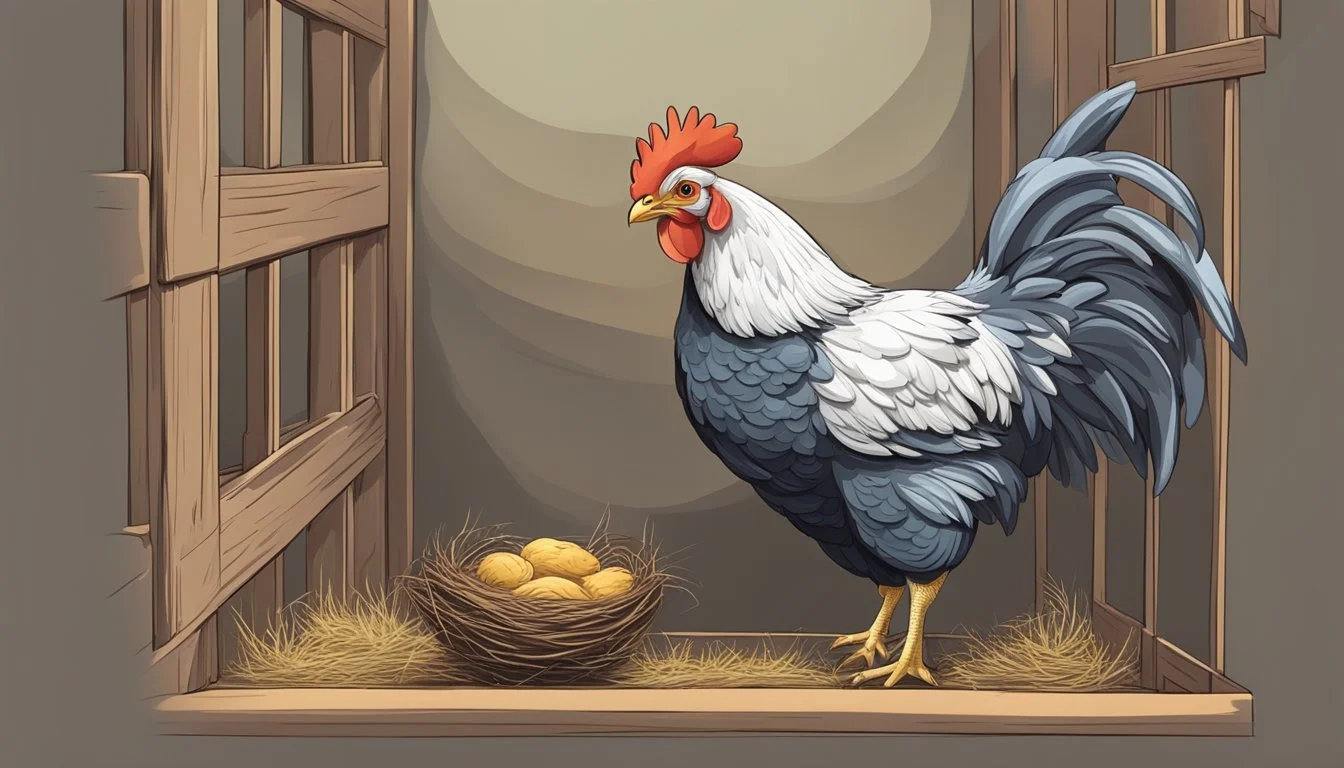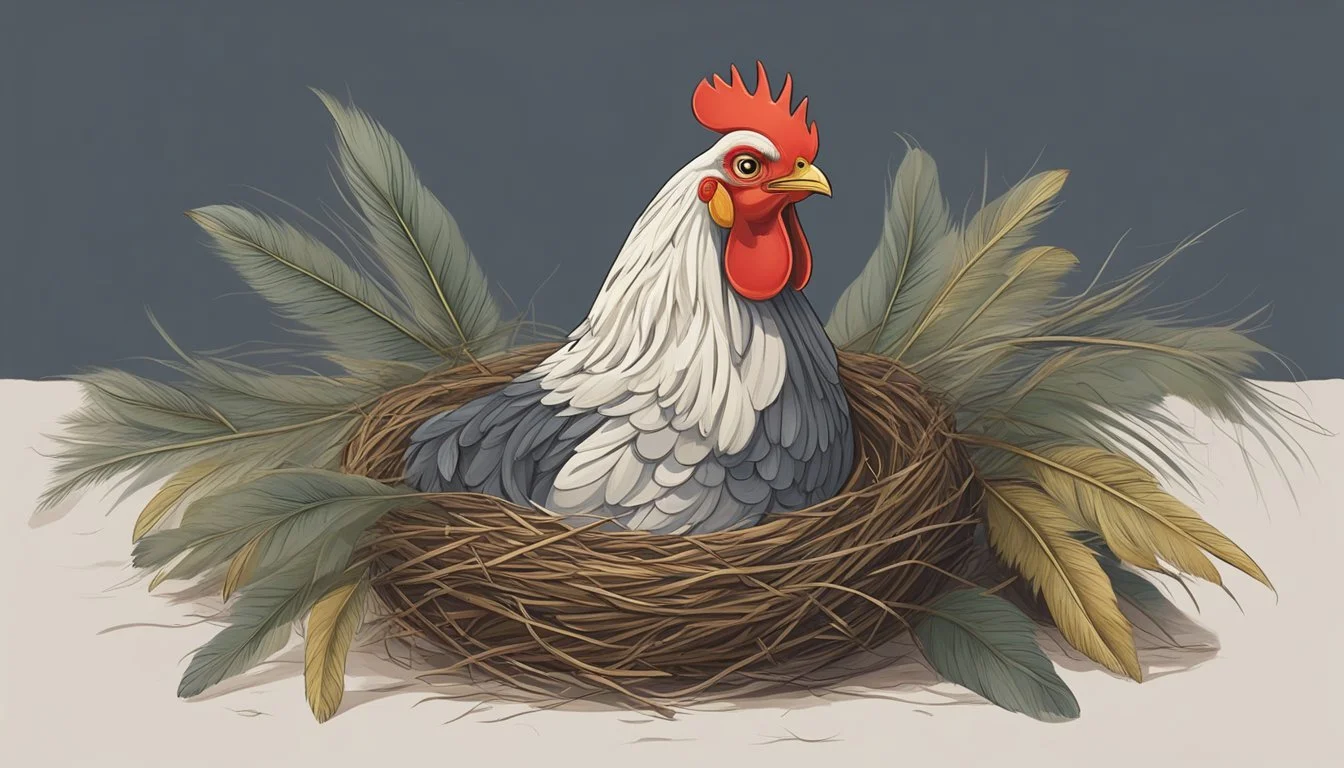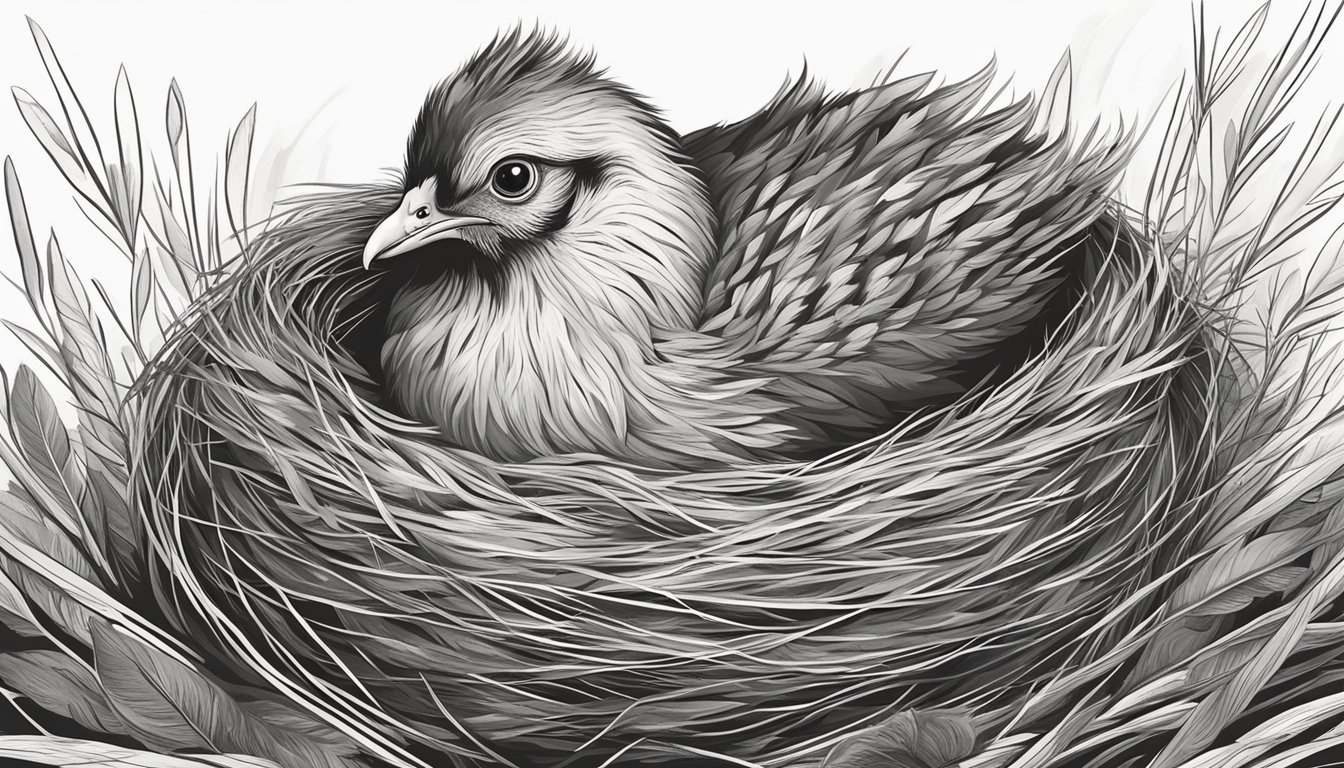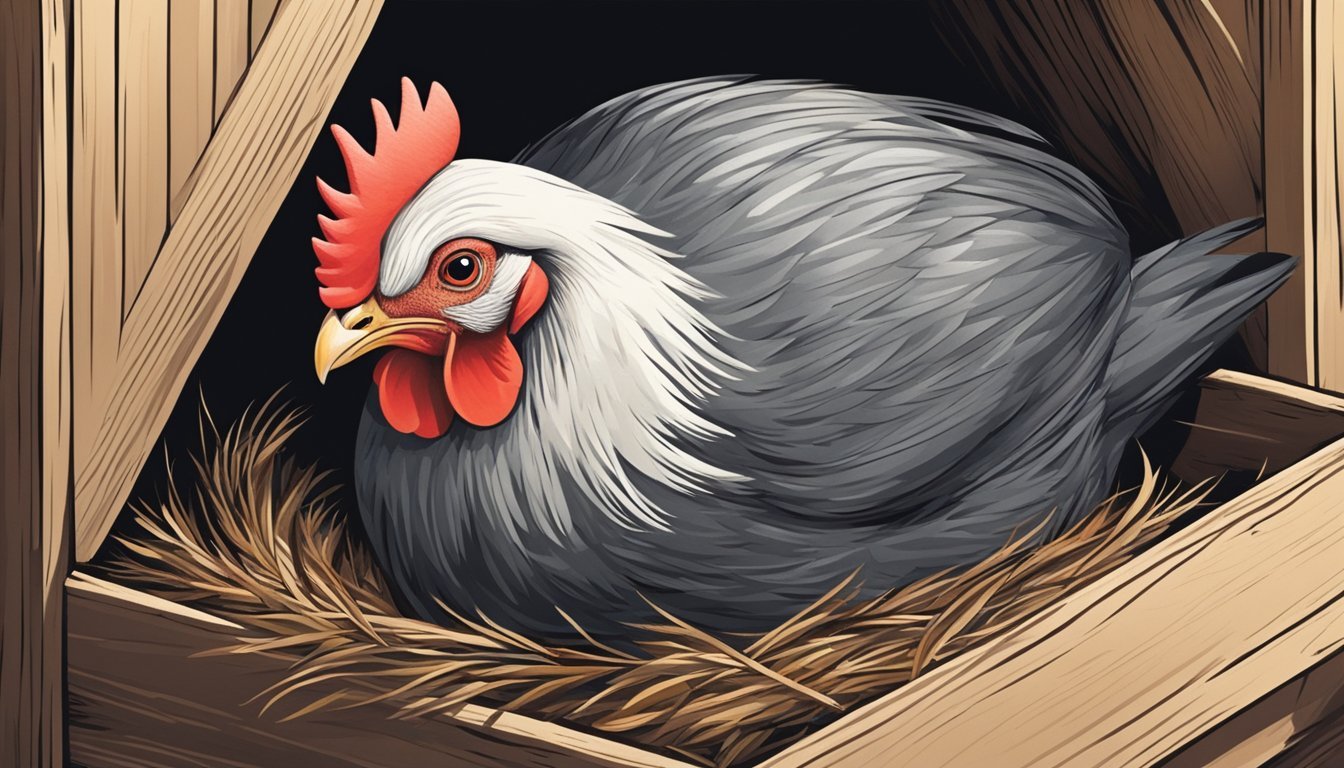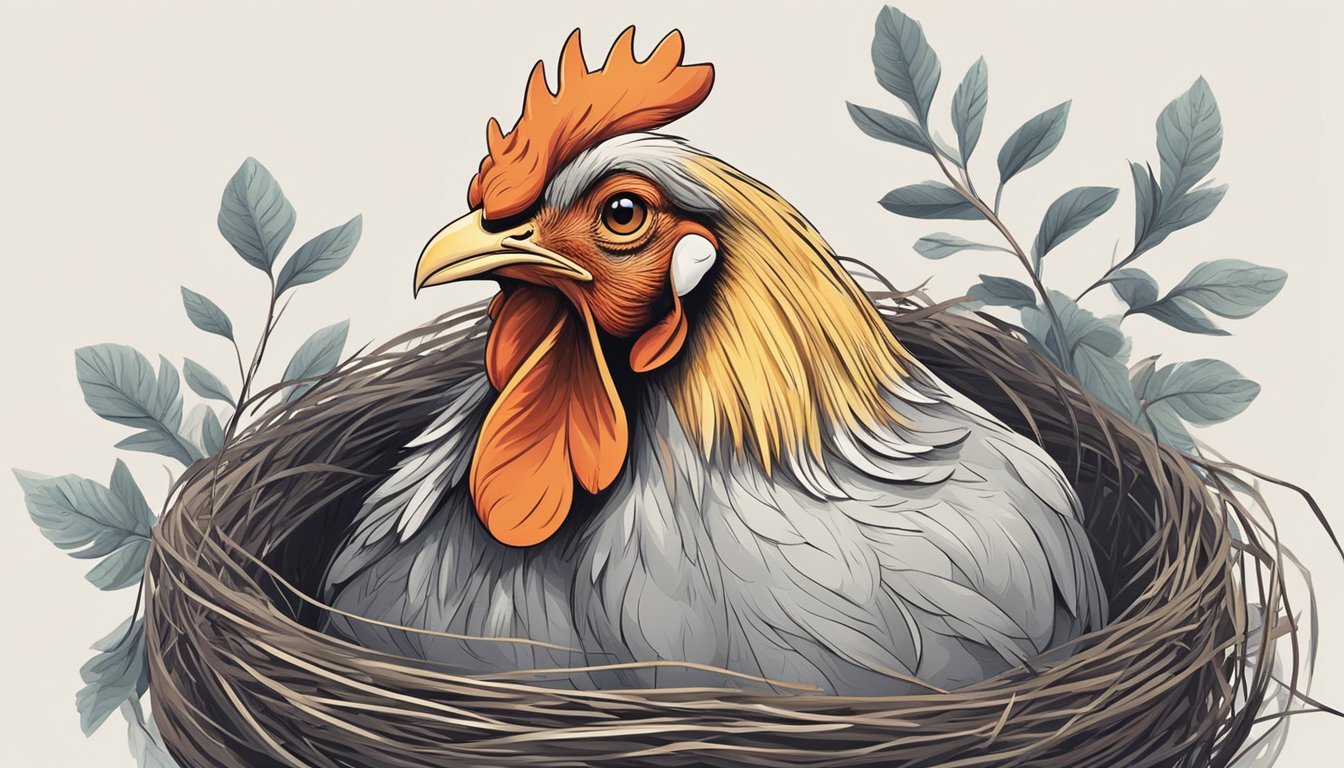How do I Deal with a Chicken That Has Gone Broody Without Eggs
Effective Strategies
When a hen exhibits broody behavior without having any eggs to incubate, it can present a unique challenge for poultry keepers. A broody hen can be quite determined, often staying in the nest for extended periods, and sometimes refusing to eat or drink adequately. Understanding why hens become broody and how to manage this behavior is essential for maintaining the health and productivity of the flock.
The instinct to become broody is natural for hens and can be triggered by hormonal changes, often leading them to desire to hatch eggs. When no eggs are present, it's important to ensure the hen returns to her normal routine to prevent potential health issues. Addressing a broody hen promptly can help discourage the habit and return her to laying eggs or mingling with the rest of the flock.
Understanding Broodiness
Broodiness is a natural behavior that some hens display, driven by instinct, hormones, and the desire to hatch eggs. Recognizing this behavior and managing it efficiently can ensure the well-being of the broody hen and the flock.
Defining Broodiness
Broodiness occurs when a hen exhibits the instinct to incubate eggs, with or without the presence of eggs in the nest. It's a complex behavior influenced by hormonal changes, primarily an increase in prolactin, which triggers maternal instincts.
Common Signs of a Broody Hen
The most common signs of a broody hen include:
Persistent sitting in the nest box, often for prolonged periods.
Feathering their nests, which involves pulling their own feathers to line nests.
Displaying aggressive behavior when disturbed, such as pecking or fluffing feathers.
Behavioral Changes and Hormones
When a hen becomes broody, her behavior and daily routine change dramatically:
The hormonal cycle alters, causing her to stop laying eggs.
There is an increase in prolactin, which further reinforces broody behaviors.
Hen might become less active and show little interest in leaving the nest for food or water.
Breeds Prone to Broodiness
Recognizing which chicken breeds have a higher tendency for broodiness is crucial for managing your flock effectively. Certain breeds exhibit strong maternal instincts and are more likely to sit on nests without eggs.
Characteristics of Broody Breeds
Broody hens exhibit specific behaviors, such as persistently sitting in the nesting box, fluffing up their feathers, and showing reluctance to leave the nest even when there are no eggs. Broody breeds often have a strong drive to hatch and raise chicks, which can be seen in breeds like Silkies and Cochins, who are notable for their regular brooding tendencies. These breeds may also become more vocal or aggressive if disturbed.
Identifying High-Risk Breeds
Among the breeds with a high propensity for broodiness, Silkies and Cochins are well known for their strong mothering instincts. Additionally, Sussex, Brahmas, and Buff Orpingtons are breeds that may exhibit broody behaviors. Buff Rocks also have a reputation for being good mothers and may go broody more often than other breeds. It's important for poultry keepers to identify these high-risk breeds early on to manage broodiness in their flock effectively.
Preventing Broodiness
In addressing broody behavior in chickens, one must focus on creating an environment that discourages the instinct to brood, while also promoting consistent egg-laying patterns. This can include adjustments to the hen's habitat and routines to mitigate triggers commonly associated with broodiness.
Environmental Factors and Management
Modifying the environment of the hens plays a crucial role in discouraging broody behavior. It's important to regularly collect eggs from the nesting boxes to prevent hens from developing the urge to sit on them. Additionally, making the nesting boxes less appealing as broody spots can be effective. This can include removing extra bedding or temporarily blocking access to the boxes once the eggs are laid and collected.
The hens' living conditions can influence their propensity to go broody. Maintaining a controlled environment that minimizes extreme variations in daylight and noise can help prevent hens from feeling the triggers of broodiness. An environment that closely mimics their natural setting, with adequate space and comfort, may reduce stress-related onset of broody behavior.
Encouraging Regular Egg-Laying Patterns
Encouraging hens to maintain a regular laying schedule contributes to suppressing broody tendencies. A balanced diet rich in calcium and protein can support regular egg production, while fresh water should be available at all times.
Adjusting the lights within the coop to provide consistent daylight hours—commonly 14-16 hours—can help maintain steady egg-laying cycles. It is critical that any artificial lighting used does not cause distress or overstimulation, which can be counterproductive. Additionally, by ensuring hens have a routine and disturbances are kept to a minimum, they are less likely to deviate from normal laying patterns.
Interventions for Broody Hens
When a hen becomes broody without eggs, certain interventions are needed to break the nesting behavior and return her to her normal routine.
Isolation Technique
The Isolation Technique involves removing the broody chicken from the communal nesting area and placing her in a separate enclosure, sometimes referred to as a "broody breaker" cage or pen. The goal is to provide an environment that is less comfortable for nesting, thereby disrupting the hen's broody routine. The cage should have a wire bottom to discourage nesting and increase airflow. This intervention can stop the hen's persistent sitting and encourage her to resume normal activities.
Physical Methods for Discouraging Nesting
In some cases, Physical Methods may be used to discourage a hen from staying in the nest box. Simple actions such as repeatedly removing the hen from the nest can be effective. For a more hands-on approach, providing cold dips or placing items like a frozen water bottle or frozen vegetables in the nest box can make it an inhospitable place for a broody hen. These cold elements lower the temperature of the nesting area, which is counterproductive to the warmth a broody hen is seeking for egg incubation.
When to Let a Hen Hatch
In determining the right time to let a hen hatch, one must consider both the advantages of natural incubation and the possibilities of managing a staggered hatch. A broody hen can provide an optimal environment for the development of fertilized eggs, leveraging her instinctual behaviors to ensure the well-being of the forthcoming chicks.
Advantages of Natural Hatching
Allowing a hen to naturally hatch eggs taps into her inherent desire to roost and care for her offspring. Chickens often have a better hatch rate when incubated by a broody hen, as opposed to using an artificial incubator. This method also can lead to healthier, more socially adept chicks that are integrated into the flock from an early age. An important consideration is whether the eggs are fertile and come from a desired breed, as this greatly influences the decision to let a broody hen take charge of the hatching process.
Managing a Staggered Hatch
A staggered hatch, where eggs in the same nest hatch at different times, can lead to complications such as the hen abandoning unhatched eggs when the first chicks emerge. To prevent this, all eggs should be marked on the day the hen becomes broody, and any new eggs laid afterward should be removed daily. If a broody hen does abandon her post or is unable to complete the hatch, a reliable broody buster or emergency incubator should be prepped to take over the incubation process. Maintaining a synchronized batch of hatching eggs is crucial for a uniform and successful hatch.
Post-Broody Hen Care
After a hen has been broken from her broody state without having hatched eggs, it's crucial to help her return to her normal routines and behaviors. The care provided during this time is essential to ensure her smooth transition back into the flock.
Restoring Normal Behavior
Hens may need support to revert back to their customary behaviors such as foraging, roosting with the flock, and dust bathing. To encourage a return to these activities, consider the following:
Encourage Dust Bathing: Create a dust bath area if one isn’t readily available. This not only aids in keeping mites and lice at bay, but also serves as a comforting behavior for hens.
Re-establish Routine: Return the hen to regular feeding times alongside the flock to help reinforce her natural patterns.
Monitor Stress Levels: Keep a close eye on the hen for signs of stress, which can manifest through changes in personality or physical symptoms like pale wattles.
Reintegration with the Flock
The hen's social structure is important, and care should be taken to reintegrate her safely with the flock.
Gradual Introduction: If the hen was separated, reintroduce her to the flock slowly to avoid aggressive behavior from roosters or other hens.
Ensure Adequate Space: Enhance the coop to prevent overcrowding, which can lead to pecking and bullying.
Observe Interactions: Watch the interactions between the hen and other chickens closely, stepping in if aggressive behavior occurs.
Fostering a hen’s return to egg-laying may take time and patience. As hens age, their egg production typically declines, but with proper care during post-broody periods, they can return to laying at a normal rate as they finish maturing. This phase is a natural part of a hen's life cycle, and with attentive care, she can readjust smoothly.
Common Misconceptions
In the discussion about broodiness in chickens, several myths and misconceptions prevail that often lead to confusion. Understanding these can help owners manage broody hens, especially those sitting without eggs, with greater effectiveness and care.
Myths About Broodiness
Broodiness is Only Triggered by Eggs: It's a common belief that hens become broody only when they have eggs to incubate. However, broodiness is a natural instinct and can be triggered in hens even in the absence of eggs. Hens of certain breeds, including so-called 'broody' breeds, are more prone to this behavior, regardless of whether eggs are present.
Broody Hens Need to Be with Chicks: Another misconception is that broody hens need to hatch and mother chicks to return to normal behavior. In fact, measures such as removal from the nest, blocking off access to preferred nesting locations with cardboard or other materials, and adjusting nesting material, can help in breaking a broody hen out of this cycle without the need for actual eggs or chicks.
FAQs on Broodiness in Chickens
Can any Hen Turn Broody? Not all hens will experience broodiness; it depends largely on the breed. Some hybrid breeds are less likely to become broody because this trait has been selectively minimized.
Does Weather Influence Broodiness? While weather can't be said to directly cause broodiness, warmer conditions might contribute to a hen's comfort level and her likeliness to exhibit broody behaviors, which can include fluffing up chest feathers or breast feathers to simulate nest warmth.
Is an Incubator Necessary to Break Broodiness? There's no need for an incubator if you're not interested in hatching chicks. Instead, focus on changing the hen's environment by closing down access to the nest and transferring her to a separate brooder location if needed. Ensure this location is protected, yet distinctly different from her preferred nesting spot.
Conclusion
When a hen exhibits broody behavior but lacks eggs to hatch, poultry keepers can manage the situation effectively. This condition in hens, marked by a refusal to leave the nest, may be handled through various interventions designed to discourage the brooding instinct.
Firstly, consistently and gently removing the broody hen from the nest is a straightforward approach. Repeatedly doing so emphasizes that egg incubation is not to be continued. Implementing this along with changes to the hen's environment can redirect her attention. For instance, modifying the nesting area or closing it off can prevent access and encourage the hen to abandon brooding behaviors.
Additionally, distraction techniques such as offering treats or increasing activities may help in engaging the hen in other aspects of her daily routine. Providing a cool and well-ventilated space helps as well since higher temperatures can promote broodiness.
Finally, should the poultry keeper wish to take advantage of the hen's natural inclination, placing her with fertilized eggs allows the broody hen to fulfill her nesting urge productively, leading to the hatching of new chicks.
Each poultry keeper should consider these methods in light of their individual circumstances and preferences. With patience and consistent application of these measures, a broody hen can be guided back into her regular laying cycle or towards a rewarding hatching experience.

